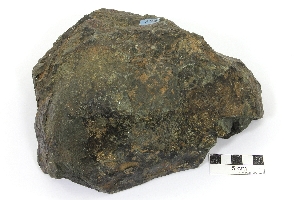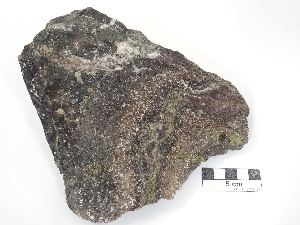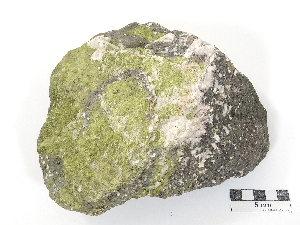Méta-basalte à épidote et calcite
(Fragment de pillow lava hydrothermalisé)
Age : Crétacé supérieur
Origine géographique :
Europe, Espagne, Pays basque, Eibar,
Province ou unité géologique :
Pyrénées
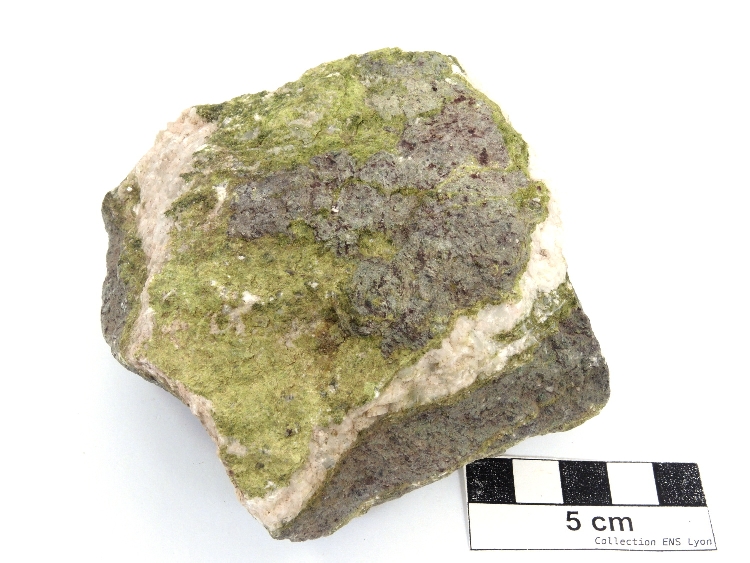
Photographie : Damien Mollex
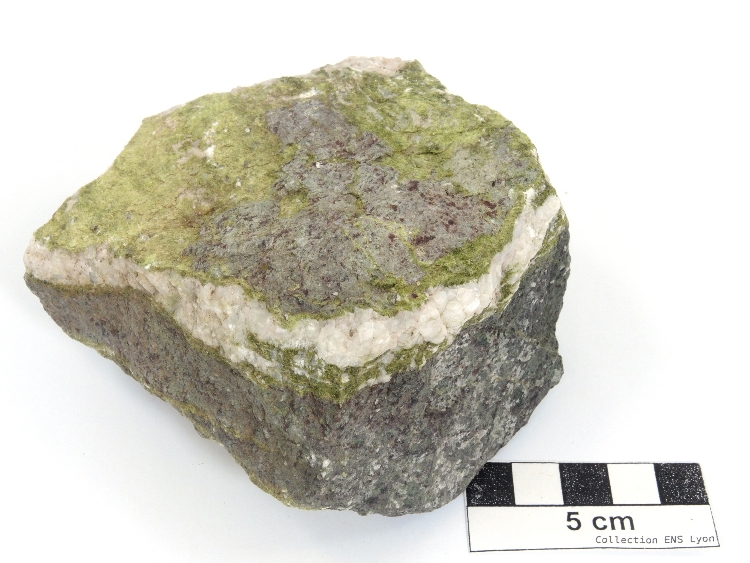
Photographie : Damien Mollex

Photographie : Damien Mollex
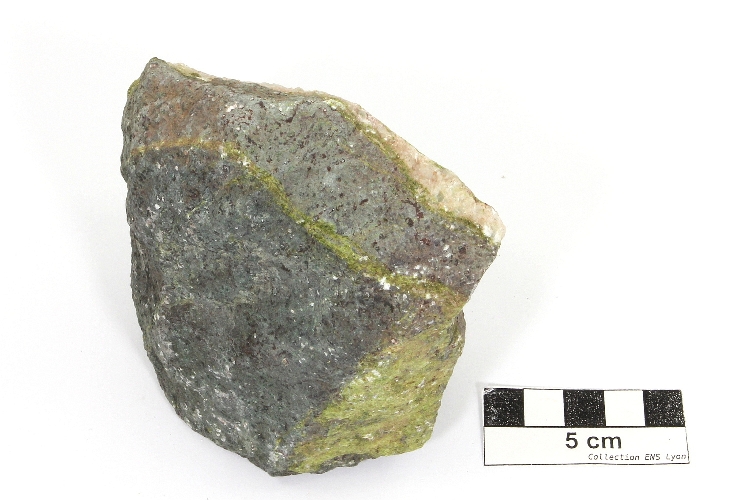
Photographie : Damien Mollex
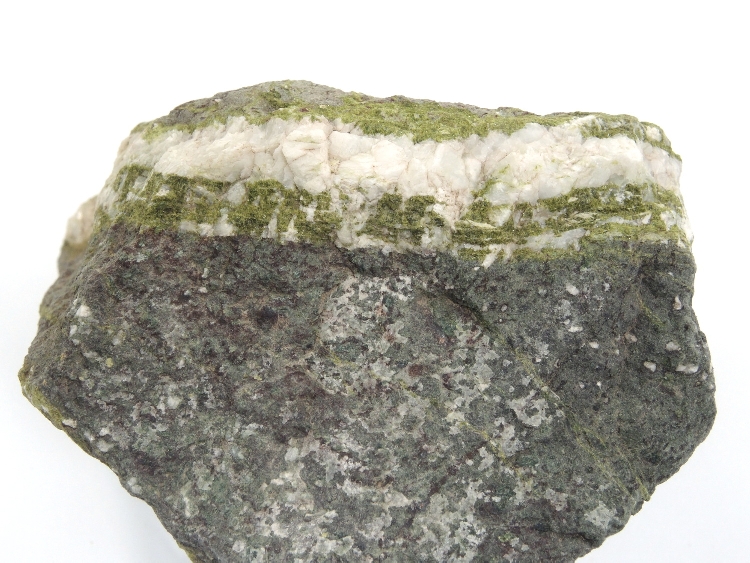
Photographie : Damien Mollex
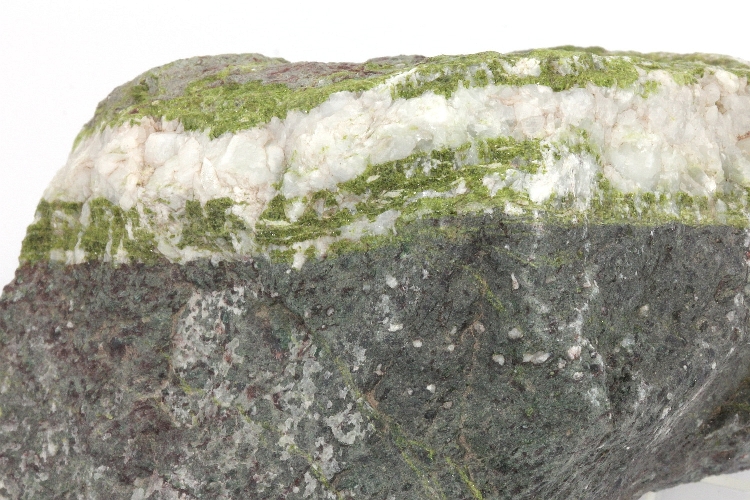
Photographie : Damien Mollex

Photographie : Damien Mollex
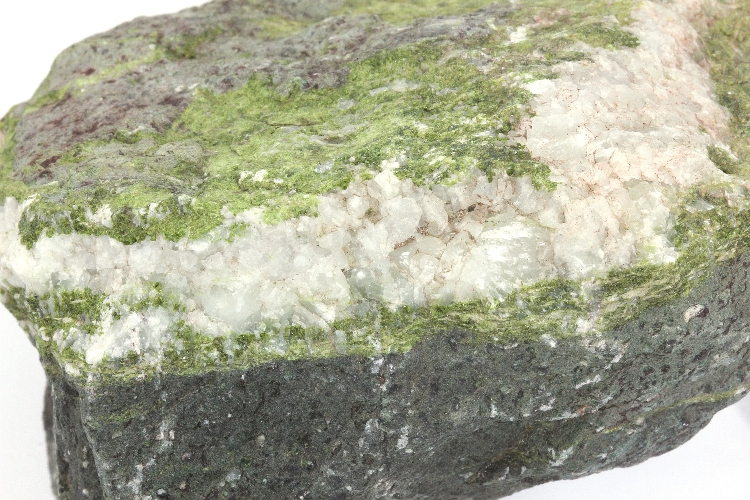
Photographie : Damien Mollex
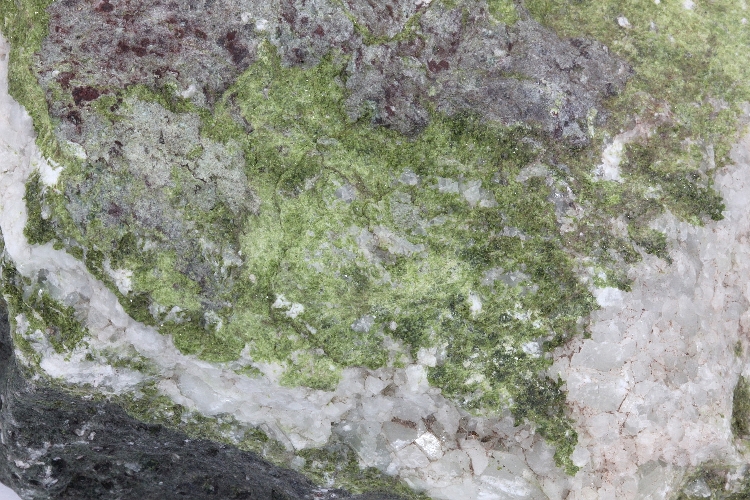
Photographie : Damien Mollex
Ce fragment de pillow lava appartient à une des petites unités magmatiques d’affinité alcaline et d’age Crétacé supérieur que l’on trouve dans la Zone nord-pyrénéenne (ZNP) et dans certains massifs septentrionaux du pays basque qui lui sont associés. L’unité d’où vient ce basalte a subie un fort métamorphisme hydrothermal (métasomatose ou propylitisation). Les fissures qui la traversent sont remplies de cristaux de calcite et d’épidote. La calcite remplie aussi les vacuoles formées par les gaz magmatiques. Les gros minéraux d’origine magmatique ne sont plus reconnaissables à l’œil nu et la mésostase a une teinte vert-bleue caractéristique d’une forte altération.
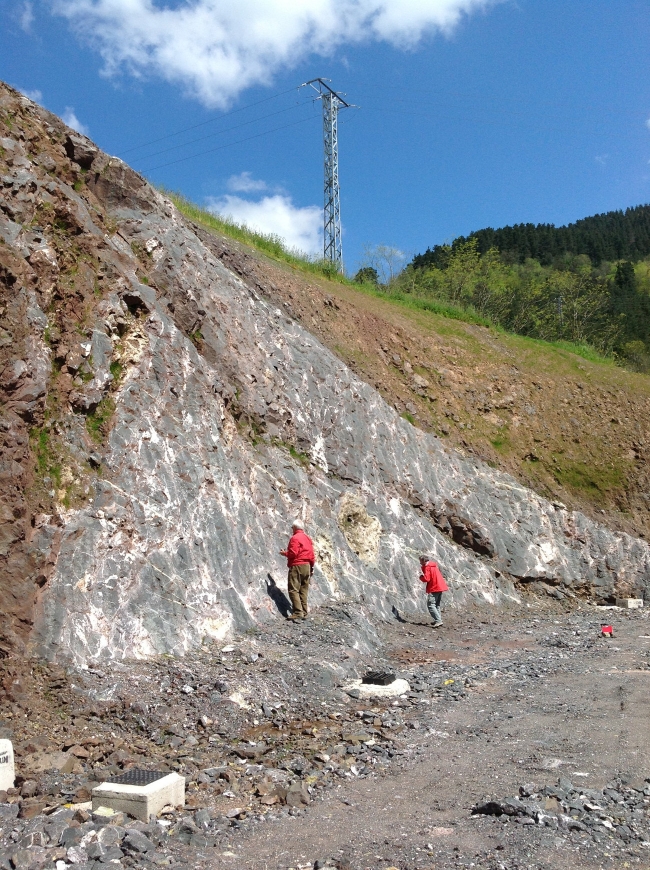
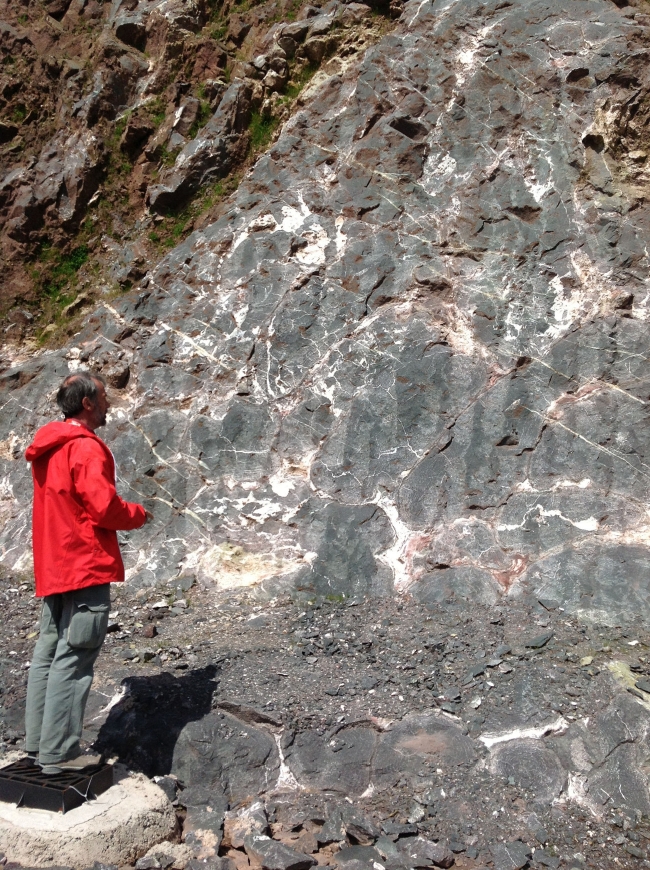
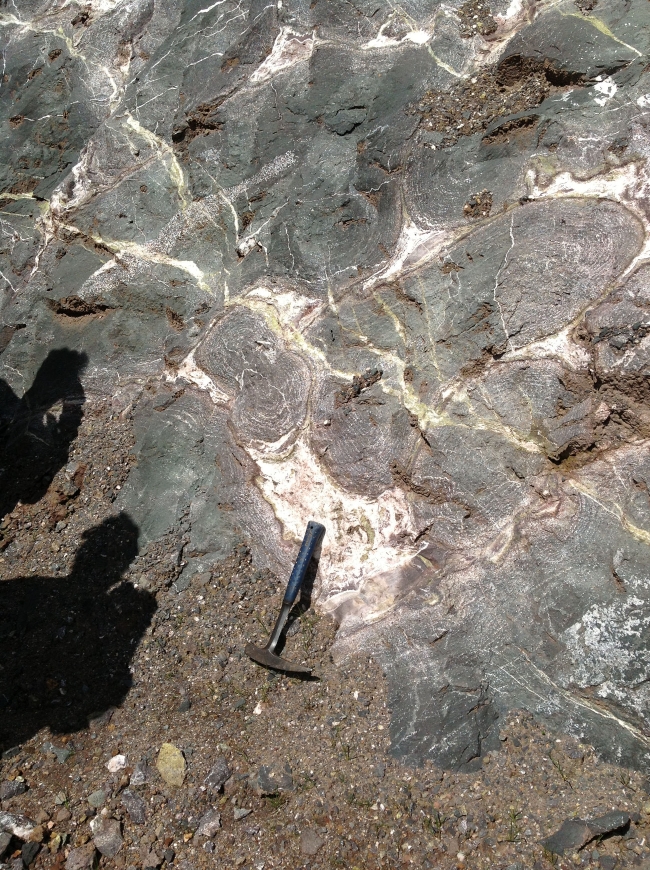
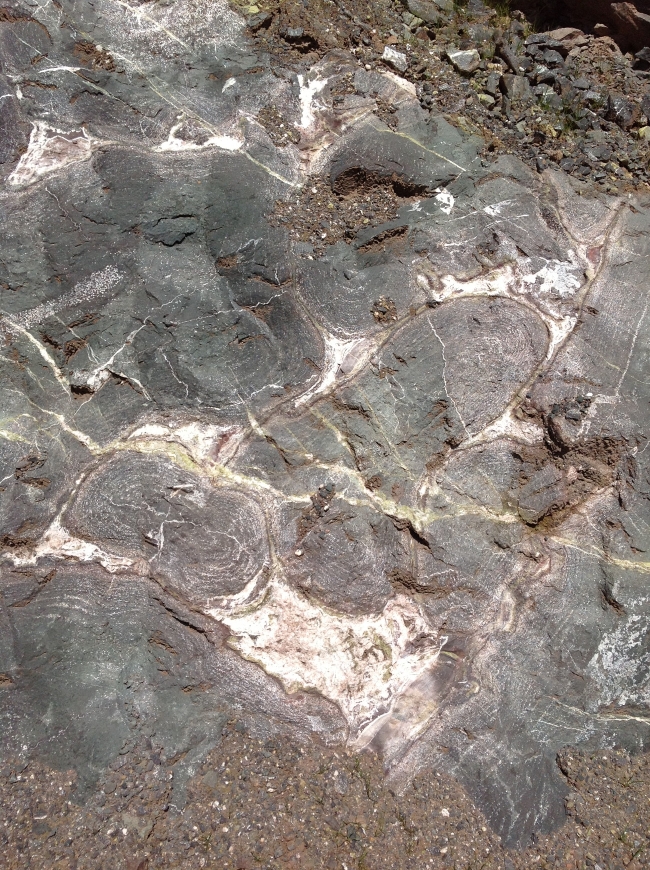
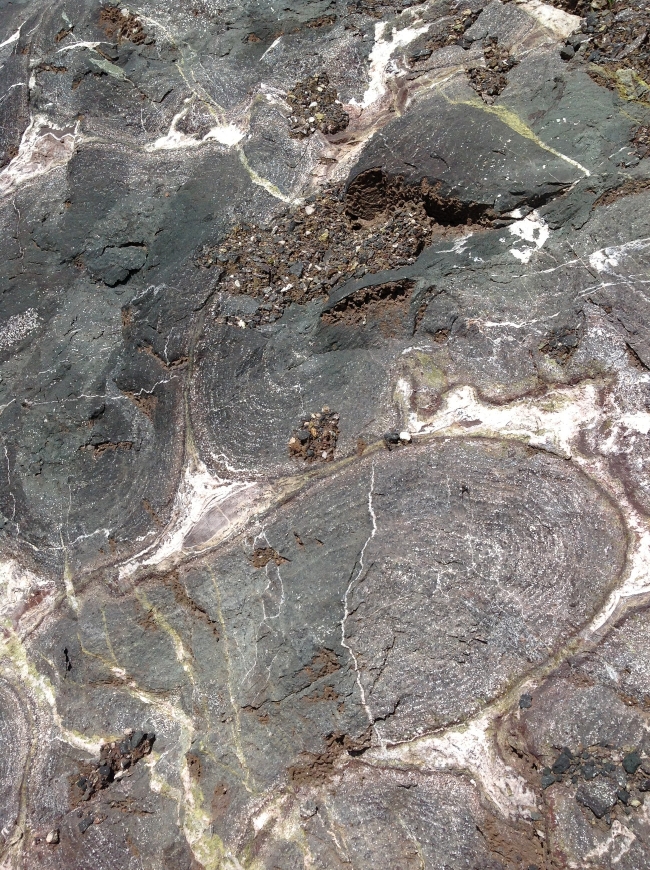
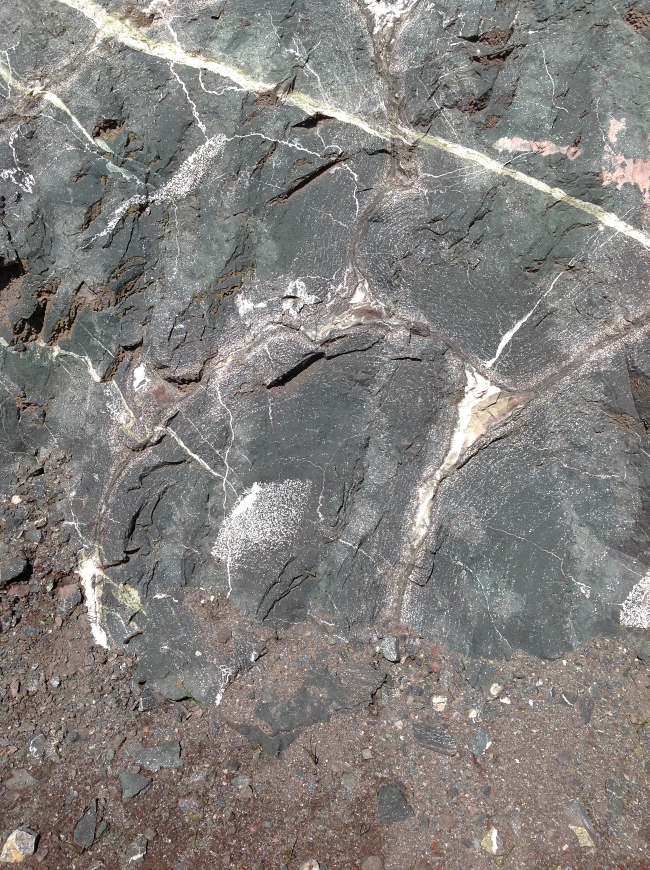
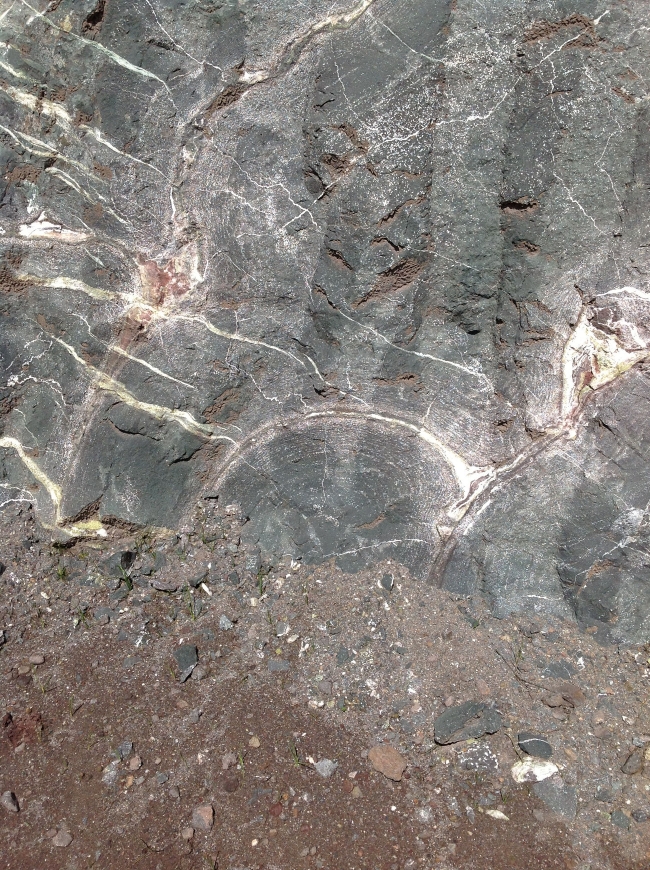
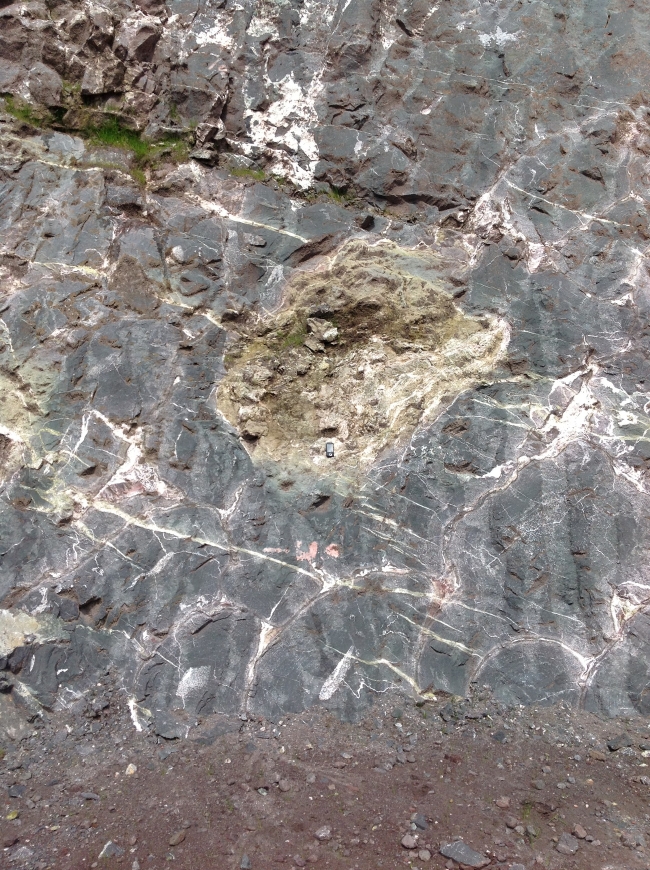
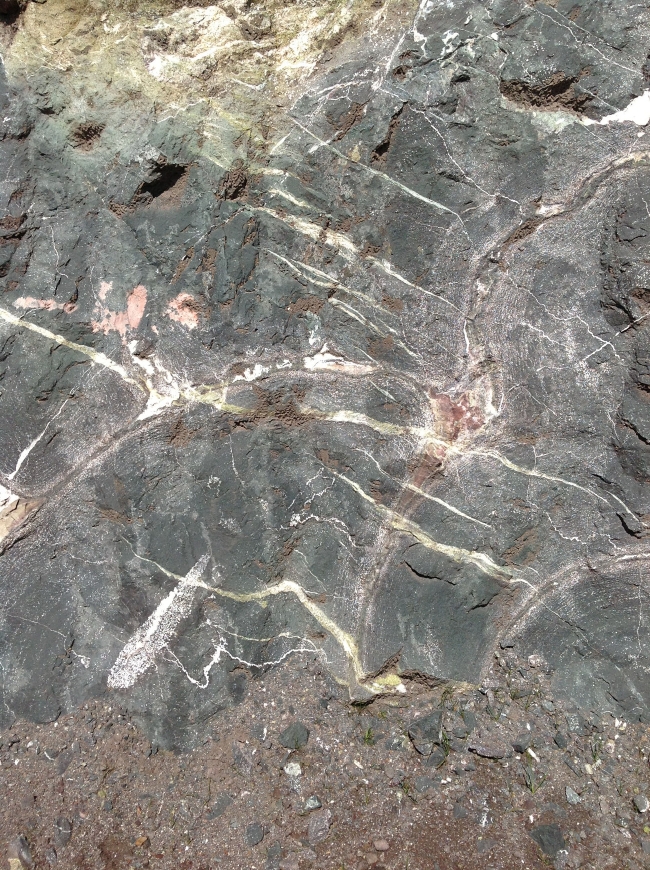
Age : Crétacé supérieur
Localisation géographique :
Europe, Espagne, Pays basque, Eibar,
Province, formation géologique :
Pyrénées
Description :
Ce fragment de pillow lava appartient à une des petites unités magmatiques d’affinité alcaline et d’age Crétacé supérieur que l’on trouve dans la Zone nord-pyrénéenne (ZNP) et dans certains massifs septentrionaux du pays basque qui lui sont associés. L’unité d’où vient ce basalte a subie un fort métamorphisme hydrothermal (métasomatose ou propylitisation). Les fissures qui la traversent sont remplies de cristaux de calcite et d’épidote. La calcite remplie aussi les vacuoles formées par les gaz magmatiques. Les gros minéraux d’origine magmatique ne sont plus reconnaissables à l’œil nu et la mésostase a une teinte vert-bleue caractéristique d’une forte altération.
Mai 2016
Catalogue ENS de Lyon
Référence : A88.1
Type : Échantillon macroscopique (1 unité)
Échantillon(s) collecté(s) par : Pierre Thomas
Échantillons semblables

